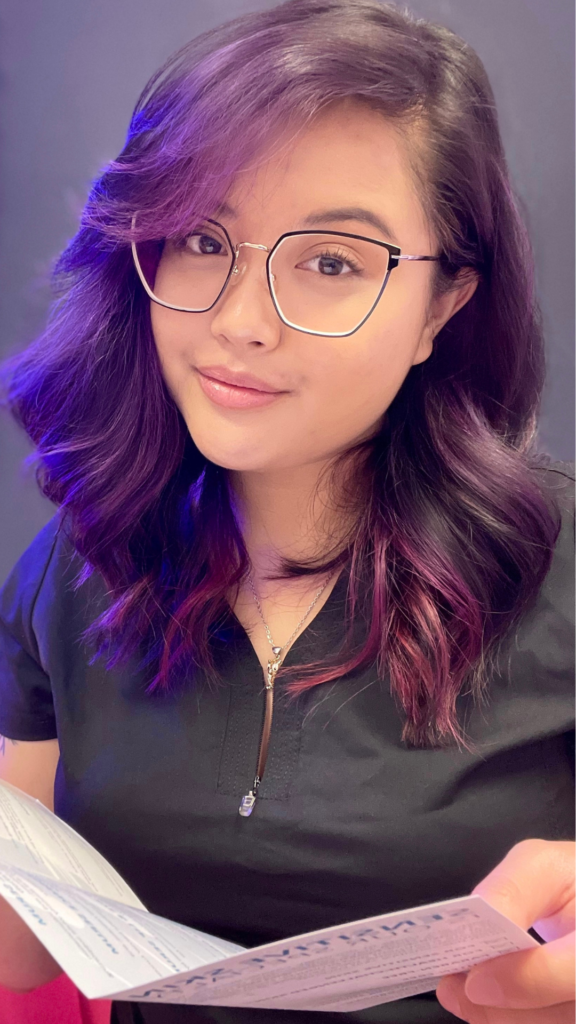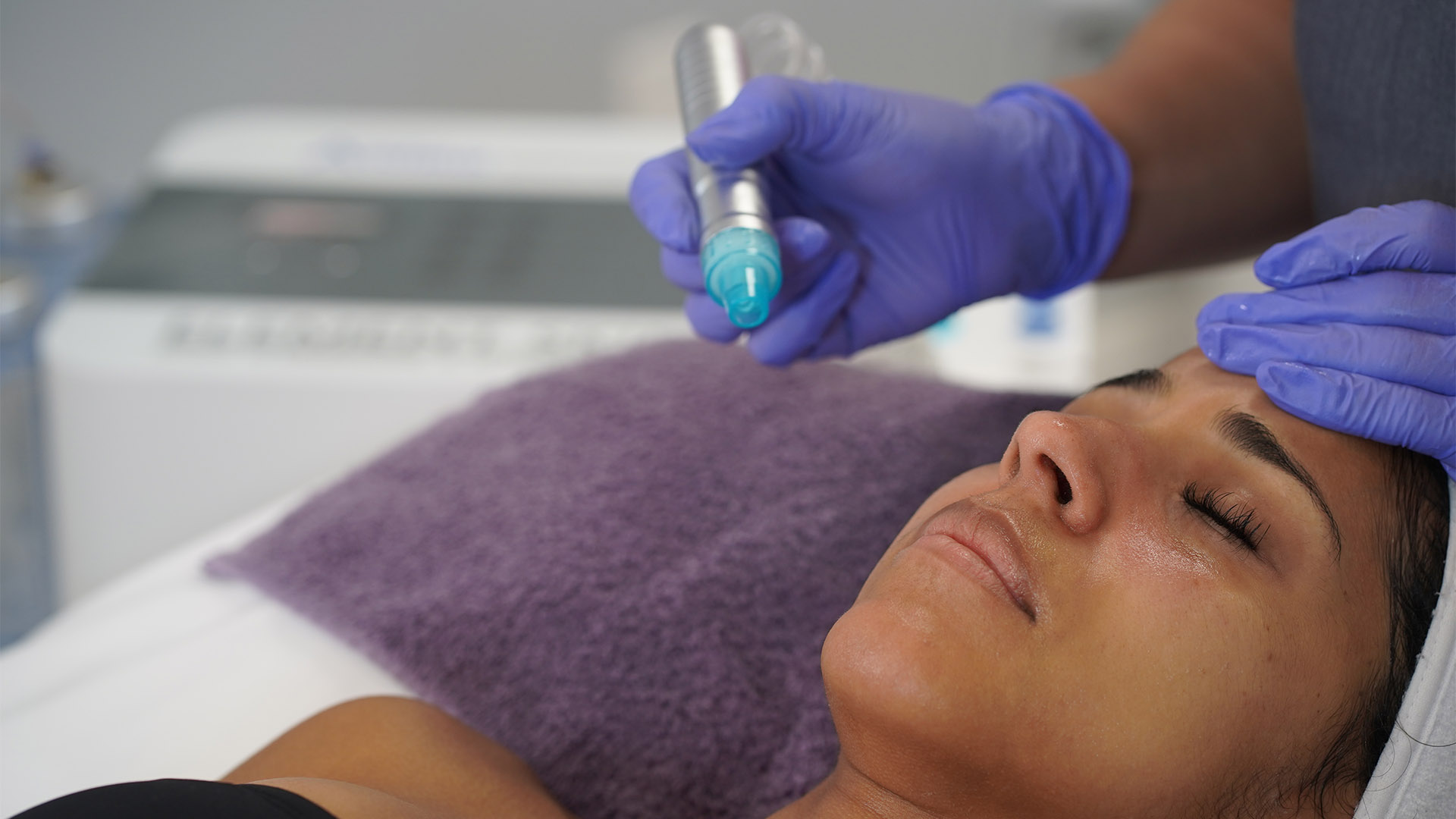Treating acne in people of color, 5 tips from an expert.
As the esthetics and beauty industry continues to grow, our clientele and the skin conditions we face will also expand. According to the American Academy of Dermatology Association, acne is the most common skin condition in the United States affecting 50 million Americans across all ages annually.¹ In addition, we see more acne in people of color and adults. Treating acne in people of color is extremely important to understand as a licensed professional. No individual is the same and each client’s background is always different when it comes to their genetics, diet, lifestyle, and skincare habits. Despite the limitations, there are effective acne treatments and products available when treating acne in people of color. Therefore, I will be providing 5 tips to help you feel more confident when treating this skin type and disorder! Please note that throughout this article, I will be referring to dark skin types as multicultural skin, ethnic skin, or people of color (POC).
Before we dive into those tips, it is crucial to understand how skin and pigmentation works. Although melanogenesis is a large topic that deserves its own platform, I want to briefly touch on what our melanocytes and melanin do. Melanocytes are the mature cells in our body that form our melanin. Melanin are the pigment granules that not only give us our skin, eye, and hair color, but it actually protects us! When inflammation or trauma occurs (e.g. UV exposure, acne lesions, or a scrape), our melanocytes work to produce melanin to protect those areas of injury. In POC, there is more melanocyte activity and stimulation causing more brown spotting and discoloration; this is commonly known as post-inflammatory hyperpigmentation (PIH).³ Therefore, using harsh/invasive chemicals or modalities on darker skin types will only cause more inflammation and PIH which we do not want.
Aside from pigment, ethnic and caucasian skin also differs in skin thickness, barrier function, melanogenesis, and inflammatory response.³ For instance, ethnic skin types tend to have more skin layers and larger oil glands causing more congestion and acne, but less aging effects compared to caucasian skin. So with all this in mind, let’s discuss some ways you can treat acne in multicultural skin safely!
1. Don’t Be Afraid
Get to know your client’s skin first by doing a thorough consultation and skin analysis with them. They may have some underlying conditions that can affect how their skin handles treatments (e.g. blood thinning medications, allergic reactions, thyroid conditions, etc.). Once you have done your initial consultation and treatment, make sure to work with your client on their goals and setting expectations. If they are dealing with acne or pigmentation issues, it may take a bit longer to heal for dark skin types because you cannot be too “aggressive” with treatments and products. Although it varies with individuals, express to them that it may take 30-90 days for their acne/pigmentation to heal from the start of treatment and consistent homecare.
Once you get a feel for how their skin reacts to treatments and products, then you can move towards advanced services/modalities. For instance, you can do chemical peels and lasers for darker skin types! They are great treatments that you can combine for the clients that need that “extra push” with their skin when it comes to acne, pigmentation, and even ingrown hairs.³ As mentioned above, just start low and slow until you both feel ready to step it up the next time they visit!

Contribution by Krisstan Aquino
Krisstan Aquino is a licensed esthetician and owner of Asteri Luxe Aesthetics, a skincare studio located in New Jersey. Although she offers a variety of services, treating acne is her passion! She loves helping her clients achieve healthier skin and making them feel confident in their natural beauty. Krisstan experienced severe acne around 2018 and made it her goal in life to understand this particular skin disorder and to help others. Since then, she has become a dual-certified acne specialist and successfully cleared many clients with her knowledge and support from professional-grade products/treatments. Krisstan also loves to create content, write blogs, and even hosts her own podcast, Glow Galaxy Radio, to help educate clients and other estheticians on all things skincare, lashes, and brows. You can connect with Krisstan on Instagram (@asteriluxeaesthetics) as she loves meeting new people in this industry!
2. Respect Clients’ Ethnic Background
Some clients have different skin care experiences growing up due to their cultural backgrounds. For example, African black soap is traditionally used in West African cultures to treat acne. However, it can sometimes be too drying or contain raw/organic ingredients that can clog pores. Shea butter in some cultures is used for increasing hydration but is not recommended for acne-prone skin because raw, unrefined shea butter can also clog pores. Do not make your clients feel bad for using products like this previously! Instead, educate them on why they may not have been the best option and what will work for them in the future.
3. Start Low and Slow
When treating acne in people of color, it is always best to work up to more advanced treatments. Depending on what your client’s goals are, darker skin types typically have issues with acne and oily skin due to larger sebaceous glands.³ They also have issues with hyperpigmentation and scarring because of their increased melanocyte activity and thicker skin. Therefore, limiting the amount of inflammation, trauma, and downtime for POC is going to be crucial to helping them achieve healthy and more even-toned skin. Stronger does not always mean better in this case! Opt for more hydrating facials or a gentle enzyme for first-time ethnic clients. Hydrodermabrasion is also a great service to provide for your ethnic clients. Once they get used to these treatments and visit regularly, then you can work your way up to advanced services such as chemical peels.

Build a better spa experience for your clients with
DermaJEM’s Spa Equipment and Hydroserums
Estheticians love DermaJEM’s equipment because they’re easy to use and they deliver real results to keep your clients coming back for more treatments.
Learn more about how DermaJEM can elevate your beauty business.
4. Use Quality Products
Two words, “tyrosinase inhibitors!” These are going to be crucial when treating acne in multicultural clients. Tyrosinase is an enzyme in our melanocytes that helps to produce melanin within the cell. Therefore, inhibiting this activity will help to reduce hyperpigmentation. Popular tyrosinase inhibitors are: Arbutin, Vitamin C (L-Ascorbic Acid), Licorice Root, Glycolic Acid, Lactic Acid, Mandelic Acid, Azelaic Acid, Kojic Acid, and Retinol.² Hydroquinone is also a well-known tyrosinase inhibitor but must be used safely and properly since it can cause bleaching. By using tyrosinase inhibitors and pigment lighteners, you reduce the risk of PIH caused by trauma from acne lesions. It also helps to prep darker skin types by keeping their skin barrier healthy and protected.
5. Homecare Is Vital
When working with dark skin types, it is important to express how beneficial homecare and treatment prep is. Explain to your multicultural clients that our melanocytes are always working on a daily basis! So in order to avoid any inflammatory/pigmentation issues, they must be using their products consistently. The same applies to acne – it is a disorder of the pores where we constantly shed dead skin cells, and unfortunately, it does not have a cure. Daily exfoliation, tyrosinase inhibitors, and antibacterial products are important for addressing acne in darker skin types. Try to suggest products with benzoyl peroxide, glycolic, lactic, salicylic, or mandelic acid.
Prevention and preparation for your dark skin types are of utmost priority. You want to make sure that your ethnic clients are on a professional homecare regimen for at least 2-4 weeks so that their skin is ready for advanced treatments. Also, express to them the importance of sunscreen! If there is one product that your multicultural clients absolutely need and have to leave your treatment room with, it is a physical sunscreen with at least an SPF of 30. Protecting those melanocytes from UV radiation will greatly help dark skin types (frankly skin types) from inflammation and skin damage.
Treating multicultural skin can be a challenge, but hopefully, with these tips, you will have more confidence to address your client’s concerns in the treatment room. Just remember this rule of thumb: “start low and slow.” This will help you build a wonderful and trusting relationship with your multicultural clients and get them the healthy skin they desire!
Citations:
- ¹ Bickers DR, Lim HW, Margolis D, Weinstock MA, Goodman C, Faulkner E et al. (2006). The burden of skin diseases: 2004 a joint project of the American Academy of Dermatology Association and the Society for Investigative Dermatology. In Journal of the American Academy of Dermatology, 55(3). (pp. 490-500).
- ² Heathman, C. (2020). Glymed Plus Global Skin of Color Manual (Second, Ed.). Glymed Plus.
- ³ Lee, J. (2020). Multicultural Skin Treatments: Learn How to Effectively Treat Skin of Color by Combining Chemical Peels and Laser Treatments (Carla DuPont, Ed.).

